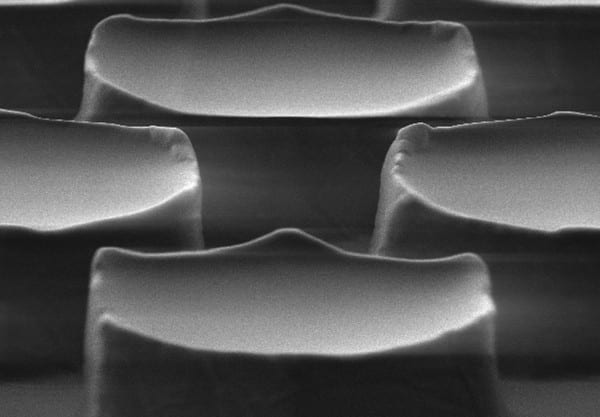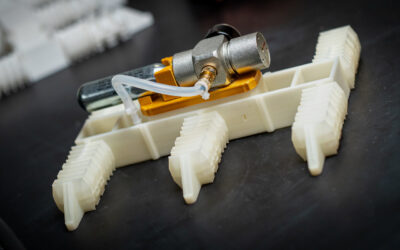 Strong adhesion and friction in the presence of a fluid layer is an important requirement in the design of non-slip tires and pavements, or plasters for surgery or adhesive tapes for external prostheses that don’t come off during or after application as a consequence of a sweaty skin.
Strong adhesion and friction in the presence of a fluid layer is an important requirement in the design of non-slip tires and pavements, or plasters for surgery or adhesive tapes for external prostheses that don’t come off during or after application as a consequence of a sweaty skin.
In nature, tree frogs have developed a distinct surface structure in their toe pads for safe attachment to wet surfaces: a hexagonal array of 10-15 mm epithelial cells separated by channels that are approximately 1 mm wide and a fluid secretion.
The surface structure of tree-frog toe pads has been mimicked in hexagonal PDMS micropillars fabricated with flat, T-shaped, and concave tips in recent research by Aránzazu del Campo and his co-workers at the Max-Planck-Institut für Polymerforschung in Mainz, Germany, in co-operation with W. Jon Barnes at the University of Glasgow.
This work, Insights into the Adhesive Mechanisms of Tree Frogs using Artifical Mimics, demonstrates the interplay between surface patterns and the wetting properties of a fluid for safer locomotion on wet surfaces. The results indicate that the surface structure in tree-frog toe pads developed for climbing, where shear (friction) forces are involved.

















